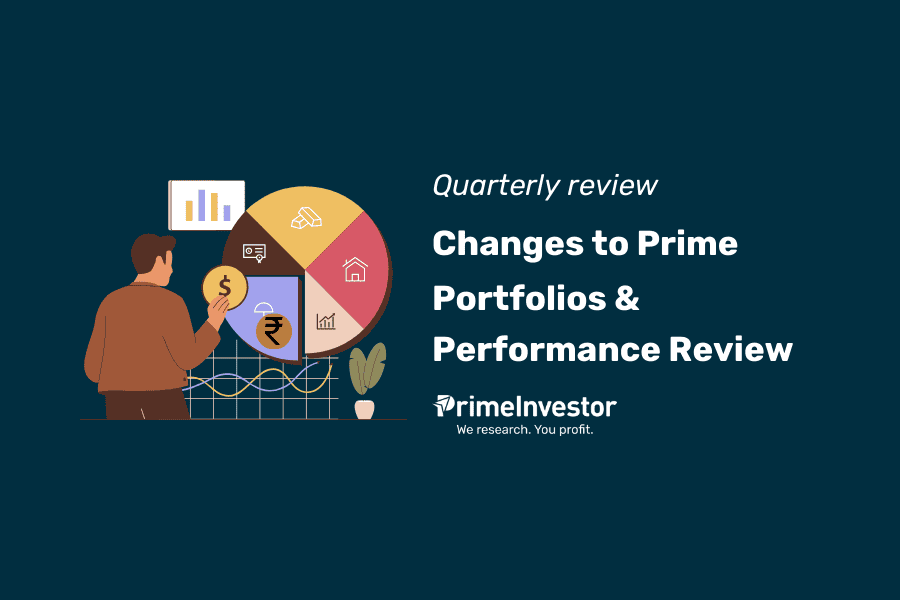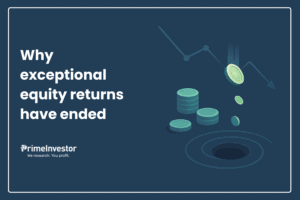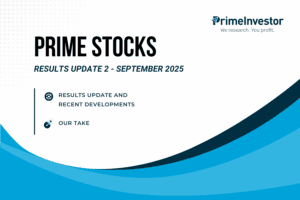Prime Portfolios are a set of eighteen unique portfolios that meet several investor timeframes and needs. Prime Portfolios are listed under Ready-to-use-portfolios in the Recommendations dropdown in MFs & ETFs. These portfolios primarily use mutual funds, but where there are better-suited products such as deposits or government schemes, the portfolios include those as well. We review these portfolios every quarter and make changes, where necessary, to remove underperformers or to include any new investment opportunity or product that may come by.

If you are new to PrimeInvestor, do go through the boxed section below on how we construct Prime Portfolios and how you can use it.
Construction of Prime Portfolios: We have classified Prime Portfolios based on popular financial needs/goals you may have. The basis for many of these would be the goal’s timeframe. We have therefore segregated many of these goals further into timeframe buckets. For those looking for passive investing options, check our home page of Prime Portfolios.
Fund or instrument selection: Prime Portfolios draw from Prime Funds and mix funds with different strategies to minimize duplication within a portfolio. However, there may be a few cases where funds are outside of Prime Funds. This apart, we use other products, primarily on the fixed income side, in portfolios where they will be good options.
Asset allocation: The asset allocation in Prime Portfolios is done based on the ‘ideal’ allocation for a given timeframe or goal. But this is not cast in stone. Assess your own capacity to take risk before choosing a portfolio. These portfolios are not ‘advisory’ in nature. They are bundled MF products with a mix of equity and debt funds and fixed income options with varying strategies for diversification.
Using Prime Portfolios
Prime Portfolios are useful in the following cases:
- If you are new to mutual fund investing, or do not know how to mix funds and want a readymade basket of funds to invest.
- If you are an existing investor but have new goals and want an asset-allocated portfolio for that purpose.
- If you wish to build your own portfolio by taking cues from the asset allocation and category allocation that we use.
- If you wish to add or modify your existing portfolios by taking cues from Prime Portfolios’ construction use Prime Funds or the MF Buy/Sell/Hold Tool. If you want help to build your own portfolio, then use our Build your own Portfolio tool to have an asset allocated portfolio with the right category mix.
If you are investing in or referring to any Prime Portfolio, note the following:
- We review these portfolios every quarter after the review of our ratings, recommendations, and Prime Funds. So, this will typically be 2-3 weeks after the end of a quarter.
- Changes may involve fund changes or individual fund allocation changes.
- In the review, where we make changes to Prime Portfolios, we will explicitly specify whether a fund needs to be exited or only SIPs stopped and investments made so far held.
- In our review reports, we mention only those portfolios where there are actual changes or portfolios to which we wish to draw your attention on any performance. If a Prime Portfolio is not mentioned in these reports, you can take it that there are no changes.
- To track changes to a portfolio, click the ‘Follow’ button to ensure you receive alerts about the changes. We send these alerts through email.
- We also publish a report on Prime Portfolios 2-3 weeks after the end of a quarter, with the detailed reasoning for changes along with action to be taken. Either way, keep note of our emails after a quarter ends!
Some asset classes in your portfolio may have strayed from the original asset allocation as market rallies. You need to run a check on this once a year to see whether you need to rebalance, as each of you would have invested in different times. Read our explanation on rebalancing here and use our calculator to know how much to invest/redeem in rebalancing.
It is important for you to read and record our emails for all the above. So kindly make sure you find some time to do this to keep your portfolio in good shape!
Performance of Prime Portfolios
We publish a report on the performance of five main Prime Portfolios as an annual exercise to give you an understanding of how our portfolios have done and compared to their benchmarks. These are our main timeframe-based portfolios and our other key portfolios.
We do not publish a performance update for the other portfolios as they don’t lend themselves to such an exercise, as either their purpose is different or they do not have measurable benchmarks as they involve government schemes or fixed deposits. These portfolios include our emergency, income generation, capital protection, retirement income, and passive portfolios.
Now, let’s move to the performance. Note the following points about how we calculate the portfolio and benchmark returns:
- Returns are SIP returns (XIRR) since January 1, 2020 which is the inception of these portfolios. Your own returns will vary based on when you entered and your investment pattern. The performance is weighted based on the proportion of allocation to each fund.
- The performance considers all changes made in the portfolios from the inception date. To explain, the calculation takes into account funds that were previously part of the portfolio but which have been removed. The calls we have such as stop-SIPs-hold or exit-and-reinvest are also taken into consideration.
- The benchmark used is a blended benchmark. We use representative indices for each of the funds in the portfolio and use the same weights to arrive at the benchmark returns.
The table below shows the performance of the portfolios against their benchmark:
Here’s explaining the performance above.
#1 The 3-5 year portfolio
This portfolio is a 50-50 blend of equity and debt. The portfolio has beaten the blended benchmark by 67 basis points. This is a thin margin, but it is a reasonable performance for the following reasons. One, half the portfolio is in debt and debt indices are highly theoretical and ideal which funds are unable to replicate making outperformance by any significant margin tough. Two, another 20% of the portfolio is in an index fund (Motilal Oswal Nifty Midcap 150). Therefore, in terms of overall returns, the portfolio is doing fine. We replaced the underperforming Mirae Asset India Largecap with Nippon India Largecap in our March 2024 review and this shift has been paying off well.
#2 The 5-7 year portfolio
This portfolio has a 65-35 equity-debt allocation. This was one portfolio that had been an underperforming, owing to our calls in funds such as DSP Midcap and Kotak Flexicap underperforming benchmarks. However, the changes we made in this portfolio to course-correct, over 2022 and 2023, have been steadily making a difference.
The portfolio’s total return, now, is in line with the blended benchmark. This performance comes even as the portfolio has a 30% weight to equity index funds. Further, the debt component which forms 35% of the portfolio, will find it hard to beat debt benchmarks as debt indices are largely theoretical by nature. The margin of underperformance with respect to the blended benchmark had been higher, earlier in our 2023 review, at 3.2 percentage points.
The following have aided the performance recovery:
- Exit and reinvest calls in DSP Midcap and Kotak Flexicap, to reduce the drag on portfolio returns and a shift into outperformers.
- Strong outperformance in Invesco India Contra, which has a 15% portfolio weight. Kotak Emerging Equity has also picked up very well, and together with Motilal Oswal Nifty Midcap 150 index fund, has helped generate strong returns.
- Nippon India Floating Rate has delivered well in the current rate cycle and can continue to hold up returns, while HDFC Corporate Bond can aid during the rate cut cycle.
#3 The 7 years & above portfolio
This portfolio has an 80-20 weight to equity and debt, and has outperformed the blended benchmark by 1.92 percentage points. We made a sweeping change in this portfolio in our March 2024 quarter review, where we:
- Replaced the underperforming Mirae Asset India Large Cap with Nippon India Large Cap. Given that the Mirae fund’s underperformance was spilling over into the longer-term, we decided to act quickly to reduce the opportunity loss. This shift has paid off very well, with Nippon India Largecap doing significantly better than the Nifty TRI.
- Changed allocations to the aggressive funds in the portfolio and introduced a high-risk thematic fund Franklin India Technology to boost returns.
These changes have aided returns, with the thematic fund delivering very well. We will actively juggle this component of the portfolio for long-term alpha generation. This apart, returns have also come by through the SBI Constant Maturity fund, that had seen returns drop in 2023 owing to the rate cycle. The bond price rally over the past year has translated into a strong return pick up.
Parag Parikh Flexicap that is the top portfolio weight at 30% had seen its margin of outperformance over the Nifty 500 TRI reduce during 2024; this has in turn weighed on the margin by which our portfolio beat the Nifty 500 TRI compared to earlier. But we’re not too worried about this – Parag Parikh Flexicap remains an outstanding long-term performer and is differentiated from other funds in the portfolio.
#4 High Growth Portfolio
This 80-20 equity-debt portfolio has delivered a good 23% XIRR, outperforming the blended benchmark by about 2.53 percentage points. This is one portfolio where we have made very few changes (although we’re being forced to, now! See the changes below). Currently, the smallcap fund in this portfolio – Nippon India Smallcap – is seeing its outperformance over its benchmark shrinking. However, the scenario in the smallcap space is that many active funds that follow a more quality-conscious approach have underperformed the index. Nippon Smallcap is otherwise an extremely steady performer.
#5 Active NRI portfolio
This portfolio has a 70-30 equity-debt allocation. The debt component uses NRE fixed deposits for the debt holding as they are better fits, in terms of taxation, than debt funds for NRIs. This portfolio has beaten the blended benchmark by a small margin. This slim margin is owing to:
- A drop in the outperformance margin of Parag Parikh Flexicap over 2024; as explained above, we are not concerned over this dip as the fund can slip in the short term. It always picks up over the long term.
- Underperformance in Mirae Asset Large Cap – we replaced this with Nippon India Largecap in our March 2024 review, but we continue to maintain a Hold on the Mirae fund for now.
The change in the largecap fund, along with introducing a thematic component, will help improve the performance of this portfolio over the benchmark going forward.
Changes in Prime Portfolios
In this quarter, we have made changes to 3 portfolios. These changes are on account of only one factor – that there are no US index funds currently available for investments. The changes and what you should do are explained below.
High Growth Portfolio
In this portfolio, we have a 15% weight to an index fund that tracks the US Nasdaq 100 index. We left the choice of the index fund to you, as funds intermittently closed and opened up for fresh subscriptions, and told you to pick the fund that was available at that point.
At this time, however, there is absolutely no fund that accepts fresh subscriptions. Therefore, it makes it impossible for any new investment to be made. For exposure to US markets, we prefer only the passive route and not active funds as it is hard to track their performance, and since active funds tend to underperform in any case.
For this reason, we are replacing this with a thematic fund – HDFC Pharma & Healthcare. The healthcare sector is one that has already picked up and continues to outperform. Potential is driven by strong growth in both domestic and export markets, along with improved performance in diagnostics and hospital segments. Despite its relatively short track record, HDFC Pharma and Healthcare Fund has demonstrated superior performance compared to its peers.
Action to take:
- Hold all existing investments made in the Nasdaq 100 fund. If you are running SIPs in that index fund and the fund allows this to continue, keep up with it. Do not stop SIPs.
- For fresh investments, use the HDFC Pharma & Healthcare fund. If you want to start SIPs now, you can do so in the fund.
Passive portfolio – Index Funds
In this portfolio, we have a 15% weight to an index fund that tracks the US Nasdaq 100 index. As explained above in the High Growth portfolio section, we are removing the fund as it is now not possible to invest in any US based index fund, Nasdaq 100 or anything else.
Therefore, we have replaced the Nasdaq 100 index fund in this portfolio with Nippon India Nifty 50 Value 20. The aim of this component of the portfolio is to generate returns to beat the general market. The Nifty 50 Value 20 index offers such an opportunity, being made up of 20 stocks of the Nifty 50 that display value characteristics. The index has steadily beaten its parent Nifty 50 index over rolling 1 and 3-year periods and beats the largecap category average as well. Its focus on cash-rich, high-quality companies can also help during market corrections.
Action to take:
- Hold all existing investments made in the Nasdaq 100 fund. If you are running SIPs in that index fund and the fund allows this to continue, keep up with it. Do not stop SIPs.
- For fresh investments, use the Nippon India Nifty 50 Value 20 index fund. If you want to start SIPs now, you can do so in the fund.
Passive portfolio – ETFs
In this portfolio, we have a 15% weight to the Motilal Oswal Nasdaq 100 ETF. Given the RBI restrictions on investing overseas by mutual funds (and ETFs), the ETF appears to find it hard to manage the demand-supply balance for its units. As a result, tracking error in this ETF has shot up sharply and there is a wide differential between the market price of the ETF and its underlying NAV. The differential has been higher than even 2% on some days.
Owing to this, we would prefer to avoid investing further with such high tracking error. Therefore, we are replacing the ETF with the Mirae Asset S&P 500 Top 50 ETF.
The S&P 500 Top 50 index represents the top 50 stocks within the S&P 500 by free-float market cap. It comprises the ‘mega caps’ within the S&P 500 and is also tech-heavy. While this ETF is also not without tracking error issues, the extent is not as much as with the Nasdaq 100 ETF. The Mirae S&P 500 Top 50 has also showcased an ability to manage tracking error well in earlier times.
Action to take:
- Hold all existing investments made in the Nasdaq 100 ETF. If you are running SIPs in this ETF, stop fresh SIPs as the high tracking error is weighing on returns.
- For fresh investments, use the Mirae Asset S&P 500 Top 50 ETF. You can start SIPs here if needed.
There are no changes in any other Prime Portfolio and you can continue investing in them as before. You can view all Prime Portfolios here.






2 thoughts on “Quarterly review: Changes to Prime Portfolios & performance review”
PI team, are the performance depicted is post tax? As each change you recommend has a tax implication for the investor.
Returns do not consider taxes. It is not possible for us to consider tax impact as it will differ for each investor, based on what funds they hold, when they entered, when they exited, whether they had any losses to set off, quantum of gain etc. – thanks, Bhavana
Comments are closed.